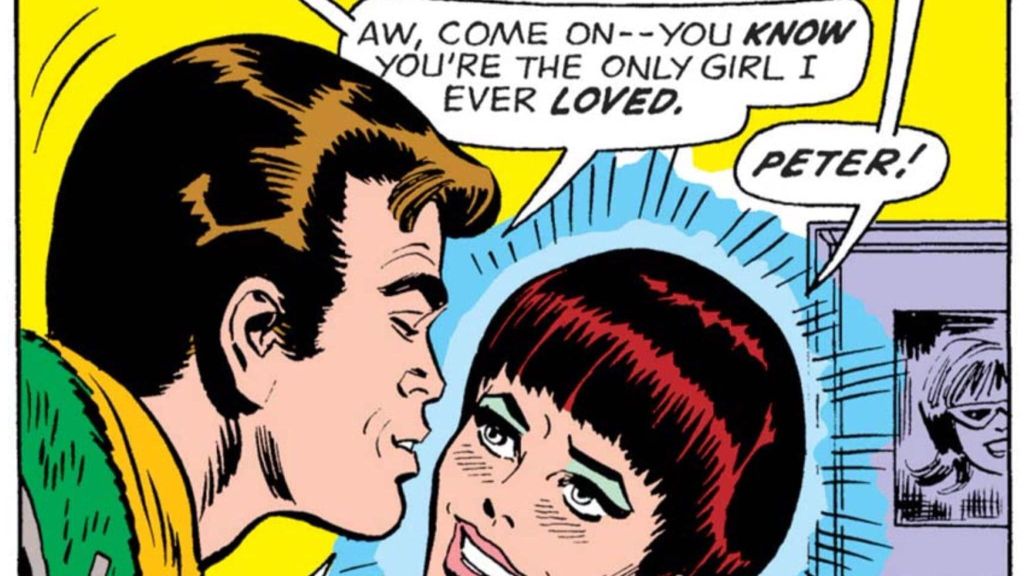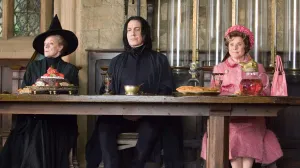Mary Jane Watson is iconic and will probably always be Spider-Man’s most famous love interest. You can never have a Spidey conversation that strays too far away from good old MJ. However, MJ’s infamy and the controversy surrounding One More Day have eclipsed Peter’s other romances. While Gwen Stacy remains prominent thanks to being a big figure in Peter’s life and the invention of Spider-Gwen, other love interests fall to the wayside. Because the erasure of Peter’s and Mary Jane’s marriage continues to be a sour subject for fans, people tend not to like Spider-Man with any other woman besides MJ.
Videos by ComicBook.com
It’s unfortunate that Mary Jane and, to a lesser extent, Gwen Stacy, take up so much discussion of Spider-Man love interests because one of his best romances is neither woman. Before Mary Jane or Gwen Stacy debuted in the comics, Peter Parker’s main love interest was the Daily Bugle’s secretary, Betty Brant, who has always been one of the sweeter and tragic love stories in the character’s history. Brant has a tumultuous history within Spider-Man history, often devalued in adaptations despite being one of the longest-serving supporting characters in the mythos. Peter and Mary Jane’s romance is great in the comics, but Betty Brant represented a time when the comics were simpler.
Betty Brant Has Been There from the Start

During the era when female characters were either low-level jobs or relatives to the main heroes, Betty Brant was introduced as Peter’s first major love interest in Amazing Spider-Man #4. Technically, Sally Avril and Liz Allen predated Betty as girls Peter was interested in, but Brant was the first woman who reciprocated Pete’s feelings. She was introduced as the proto-traditional Stan Lee love interest, serving a low entry job where the hero works and acting as moral support for the protagonist. She hadn’t adopted her iconic hair bob yet and instead had curls. Betty felt very inline with other Stan Lee romances like Pepper Potts, Jane Foster, and Karen Page. Foster was the nurse working for Doctor Donald Blake in the Thor comics, whereas Potts and Page were the secretaries for Iron Man and Daredevil, respectively.
Rescuing Betty Brant, alongside his Aunt May, was the focal point for the very first Spider-Man Annual, a momentous milestone that incorporated the hero’s rogues gallery and cameos from other Marvel heroes. Brant was a vital character in the first year of Spider-Man’s history, being set up as the character’s primary love interest going forward in the same manner as Potts and the rest of the heroes’ girlfriends. Then the comics switched gears with Peter’s and Betty’s relationship following the death of Betty’s brother, Bennett, in Amazing Spider-Man #11. Betty blamed Bennett’s death on Spider-Man, who was fighting Doctor Octopus and a gangster at the time. She remained Peter’s primary love interest for the next few issues, but they began drifting. Eventually, Betty starts dating Ned Leeds to make Peter jealous, yet her and Pete’s romance never rekindles.
[RELATED – Amazing Spider-Man #2 Continues Giving Readers Classic Spider-Man Cool (Review)]
Betty Brant Has Always Been One of the Best Spider-Man Characters

Even though Aunt May “threatened” Peter to meet with her friend’s niece, Mary Jane, for several issues, Peter didn’t really have any other major love interest until college and meeting Gwen Stacy in Amazing Spider-Man #31. Gwen would essentially become Spider-Man’s main love interest for the next 90 issues, with Mary Jane being included in the cast to serve as a foil. Betty Brant didn’t fit within Peter’s increasingly complicated love life, so she became his platonic best friend, a role she’s kept since then. She will also have an equally contrived love life, with her subsequent marriage to Ned Leeds leading her to become a widow when he was framed to be the Hobgoblin. She would have several romances within the Spidey cast, prominently with Flash Thompson. Betty dated Flash during his time as Agent Venom, their relationship ended when she was forced to shoot the new Crime Master, her resurrected brother.
She is back together with Ned Leeds, who faked his death and cleared his name as the Hobgoblin. Betty would soon give birth to Ned’s son. Her friendship with Peter remains one of the character’s most consistent aspects, having endured over five decades of superhero soap opera. She grounds Peter in a way that his other relationships, including his main canon romance with Mary Jane, don’t do. It’s admirable that Marvel has kept Betty’s and Peter’s relationship strictly platonic after their failed romance, especially since platonic male and female friendships are uncommon.
Nevertheless, Pete’s and Betty’s romance is nostalgic, representing a simpler time in the characters’ history. Peter’s failure to keep his relationship with Betty was an important stepping stone in his development. He needed to fail with his romance with Betty to move on to Gwen and Mary Jane. While Marvel insists on keeping their relationship platonic in the main continuity, there’s always that lingering what could’ve been with their dynamic. There are oddly few what-if comics or alternate universe stories where the pair remain a couple, underestimating how vital that relationship was during the early years of Amazing Spider-Man. There is a world, or a story, where Peter and Betty made it work, yet Marvel is more interesting with alternate universes where Peter is married to Gwen Stacy or angsty about the death of Mary Jane. The Betty and Peter romance was a genuinely beautiful thing that deserves more recognition than it gets, offering a throwback for the Silver Age. Gwen and Mary Jane are great, but it is time for Betty Brant to be viewed as one of the wall-crawler’s defining love interests in the same breath.








